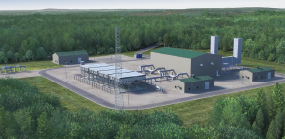In order to obtain approval for construction of an interstate natural gas pipeline, a pipeline company must file a detailed project plan with the FERC, including comprehensive reports that discuss baseline environmental conditions and potential impacts to resources from the project. Before the Commission will authorize construction, it reviews the project to determine if it is in the public interest and conducts an environmental review to evaluate the project’s anticipated impact on the public and the environment under the National Environmental Policy Act (NEPA).
The time required for the review process varies, based on the size and sensitivity of the project, but typically it takes between 6 to 18 months from the time a pipeline company submits an application until the Commission renders its decision as to whether they will approve a certificate for a project. Once the certificates is issued, the Commission will authorize construction to begin after the conditions established in its certificate order are satisfied.
FERC currently employs two tracks for its NEPA environmental review of jurisdictional pipeline, liquefied natural gas (LNG), and other facility projects. The “traditional filing” process is an optional process for nonnâ€LNG-related pipeline (and other non-LNG-related facility) projects, in which FERC involvement starts at the time the applicant files its application for a certificate. Alternatively, the “pre-filing process,” which is currently required for LNG and LNG-related projects, involves FERC and other stakeholders prior to the time the applicant files its application for a certificate.
The pre-filing process has been assumed by the FERC and others to be more efficient and cost-effective than the traditional filing process. Anecdotal information from many project sponsors using the pre-filing process, both voluntarily and required, indicate that this assumption may not be correct. The Foundation’s study examines the attributes of both processes. The study compares the two processes with regard to cost, length of schedule, efficacy of the environmental report(s) preparation, and contracting and materials ordering as a measure of financial risk. The information pertaining to these categories was derived from interviews with natural gas industry companies and stakeholders (e.g., federal and state regulatory agency staff), as applicable.
The study analysis considered both factual data and perception data. The results were grouped into five main issue categories: choice of filing method, project schedules, project costs and contracts, process predictability, and process preference. Upon review and interpretation of the study results, recommendations and next steps were developed to address the relevant issues. These are presented as potential methods to improve the overall efficiency and effectiveness of the Environmental Report (ER) filing process, regardless of which filing process is utilized by applicants for future projects.



